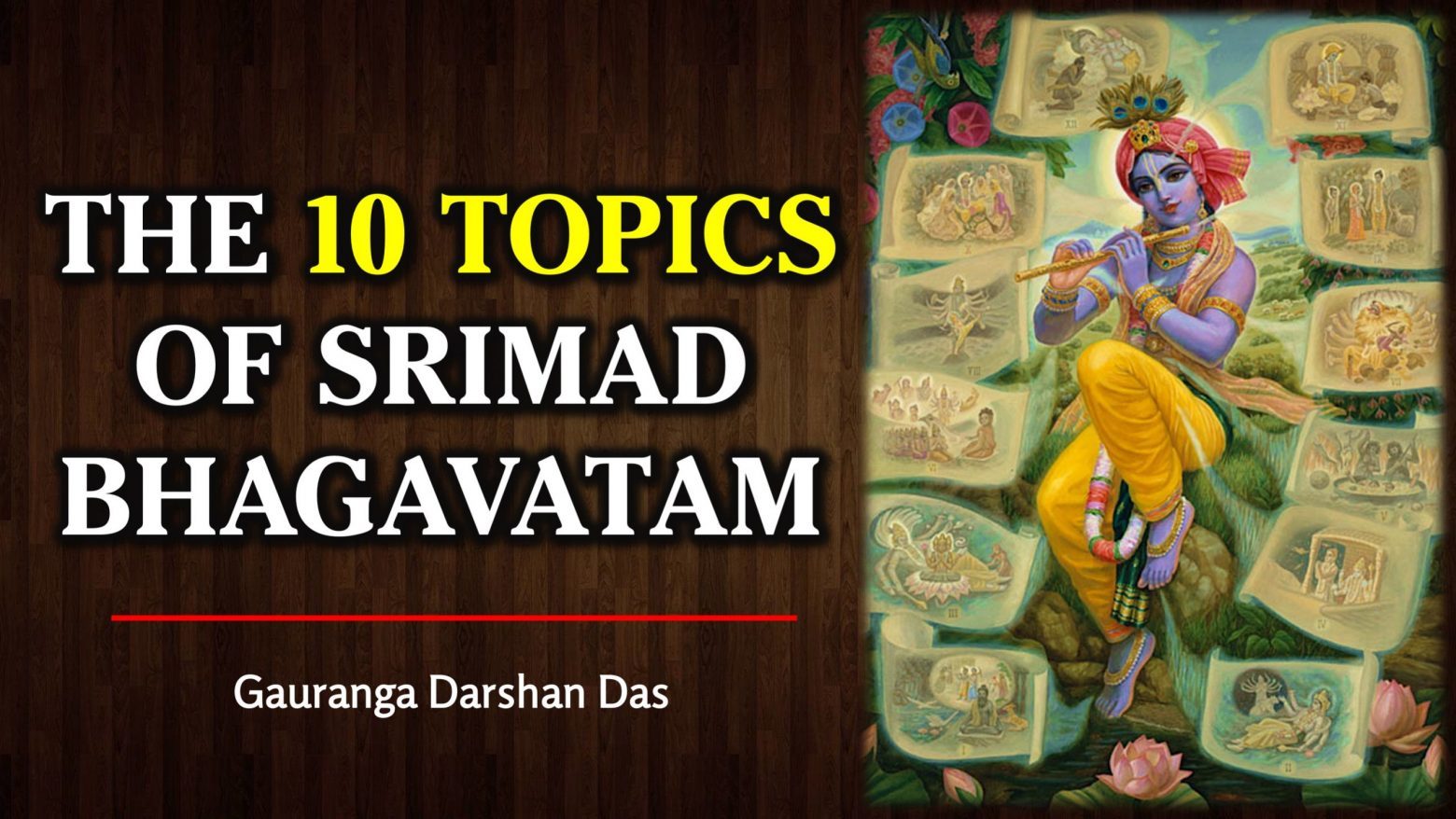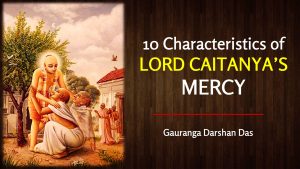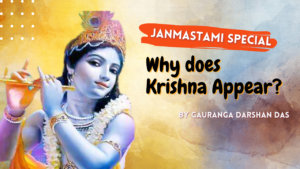The Ten Topics of Srimad Bhagavatam
by Gauranga Darshan Das
A brief outline of the twelve cantos of Srimad-Bhagavatam that represent the bodily limbs of Lord Sri Krsna and present ten transcendental topics.
Of all the sacred Vaisnava scriptures, Srimad Bhagavatam is considered the topmost. Lord Sri Caitanya Mahaprabhu hailed the Bhagavatam as the spotless authority (pramanam amalam) amongst the Vedic literatures. Srila Rupa Gosvami, in his Bhakti-rasamrta-sindhu declared that hearing Srimad Bhagavatam is one of the five most potent forms of bhakti-yoga.
Srimad Bhagavatam has been compiled by the literary incarnation of Godhead, Srila Vyasadeva, in the maturity of his knowledge. The Bhagavatam is that scripture that gave complete satisfaction to its author, who was not satisfied with his earlier works, including various other Puranas and Mahabharata. All the Vedic scriptures are compared to a desire fulfilling tree and Srimad-Bhagavatam is compared to be the ripened fruit of that desire tree, the essence of all scriptures (akhila-sruti-saram).
BHAGAVATAM’S CANTOS ARE LORD KRSNA’S LIMBS
Srimad Bhagavatam is non-different from the Supreme Personality of Godhead Lord Krsna. It is the granthavatara or book-incarnation of Lord Krsna, narrating the pastimes of His various avataras. Lord Krsna, after His disappearance, has again returned in the form of this book (sri-krsna parivartita) to shed light on the misdirected civilization of Kali-yuga. Srimad-Bhagavatam has Twelve Cantos that repreasent the limbs of Lord Sri Krsna’s transcendental body.
padau yadiyau prathama-dvitiyau
trtiya-turyau kathitau yad-uru
nabhis tatha pancama eva sastho
bhujantaram dor-yugalam tathanyau
kanthas tu rajan navamo yadiyo
mukharavindam dasamah praphullam
ekadaso yasya lalata-pattam
siro’pi tu dvadasa eva bhati
tam adidevam karuna-nidhanam
tamala-varnam suhitavataram
apara-samsara-samudra-setum
bhajamahe bhagavata-svarupam
“The First and Second Cantos of the Bhagavatam are Sri Krsna’s lotus feet. The Third and Fourth Cantos are His thighs. The Fifth Canto is His navel. The Sixth Canto is His chest. The Seventh and Eighth Cantos are His arms. The Ninth Canto is His throat. The Tenth Canto is His beautiful lotus-face. The Eleventh Canto is His forehead. The Twelfth Canto is His head. I bow down to that Lord, the ocean of mercy whose colour is like that of a tamala tree and who appears in this world for the welfare of all. I worship Him as the bridge for crossing the unfathomable ocean of material existence. The Bhagavatam has appeared as His very Self.” (Padma Purana)
Since the Bhagavatam is non-different from Lord Krsna, just as one takes darsana of the deity of Krsna gradually from His lotus feet to the lotus face, one has to study Srimad-Bhagavatam step by step from the first canto to the last. Srila Prabhupada emphasizes, “The only qualification one needs to study this great book of transcendental knowledge is to proceed step by step cautiously and not jump forward haphazardly as with an ordinary book. It should be gone through chapter by chapter, one after another.” (Preface to Srimad Bhagavatam)
THE TEN TOPICS OF SRIMAD BHAGAVATAM
Glorified as a maha-purana, Srimad Bhagavatam contains ten subjects as described in this verse (SB 2.10.1)
atra sargo visargas ca sthanam posanam utayah
manvantaresanukatha nirodho muktir asrayah
- Sarga: universal creation by the Supreme Lord
- Visarga: secondary creation by Lord Brahma
- Sthanam: positioning of living entities in various planetary systems
- Posanam: the Lord’s protection for the devotees
- Uti: inclination to act
- Manvantara: the reign of Manus
- Isanukatha: the topics of the Lord’s various incarnations and His devotees
- Nirodha: annihilation
- Mukti: liberation
- Asraya: the supreme shelter, Lord Krsna.
All aspects of knowledge important for human beings, summarized in the above ten categories, are described with various degrees of emphasis and analysis throughout the Srimad-Bhagavatam. Although all these topics are spread throughout the Bhagavatam, each of these topics is more vividly described in specific cantos.
The ultimate purpose of the first nine topics is to help us understand the tenth topic, asraya-tattva. The first nine topics deal with the Supreme Lord Krsna’s various energies, expansions, majesty, and greatness. Understanding them helps us better appreciate His personal attributes and activities with His dearest devotees as described in the tenth canto. Without studying the first nine topics, one might perceive the pastimes of Krsna in the tenth canto as ordinary.
SRIMAD BHAGAVATAM IN A NUT SHELL
The following is a brief outline of the twelve cantos of the Bhagavatam that represent the bodily limbs of Lord Krsna and present the above ten topics.
The First Canto and the Second Cantos of the Bhagavatam are considered the lotus feet of Lord Krsna. They form a perfect prelude to the rest of the Bhagavatam by introducing the reader to its key philosophical concepts and prominent characters. They also establish Lord Krsna as the Supreme Personality of Godhead and bhakti-yoga as the topmost spiritual path. In the first canto, Suta Gosvami describes to the Naimisaranya sages, the history of Bhagavatam; the birth and activities of Pariksit Maharaja, who even chastised Kali; and the exclusive dependence of devotees like Uttara, Pandavas, Kunti and Bhisma on Lord Krsna and bhakta-vatsala Krsna’s reciprocation with them. In the second canto, Sukadeva Gosvami describes the supremacy of krsna-bhakti, while presenting various other processes on the Vedic landscape, like demigod worship, meditation on universal form (virat-rupa) and Supersoul (paramatma) as a part of Astanga yoga. He also explains the catuh-sloki (the four seed verses of Bhagavatam) and finally gives the definitions of the ten topics of the Bhagavatam.
The Third and the Fourth Cantos correspond to Lord Krsna’s thighs and predominantly describe the topics of sarga and visarga, through the conversation of Vidura and Maitreya. The Third Canto also describes time, embryology, family life, Sankhya, bhakti-yoga, astanga-yoga, jnana-yoga, karma, and the spiritual and the material worlds. We further read the pastimes of Lord Varaha, the description of Vaikuntha, the household life of Kardama Muni and Devahuti, and the teachings of Lord Kapila in the Third Canto.
The Fourth Canto is very rich in its contents. It unveils inspiring and instructive stories of admired personalities like Lord Siva, Suniti, Dhruva, Narada, Anga, Prthu and the Pracetas, who all showed extraordinary examples of bhakti. One can also learn about the unfavorable attitudes in bhakti from the mistakes of characters like Daksa, Suruci, Vena, Indra and Pracinabarhi. We get to witness how the positive transformation undergone by many of these personalities, mainly due the intervention of devotees, adds to the glory of bhakti. Furthermore, the prayers of pure devotees like Dhruva, Prthu and the Pracetas uncover the depths of the foremost aspiration of a devotee: to hear krsna-katha in the association of devotees.
The Fifth Canto corresponds to the lotus navel of the Supreme Lord. In this canto, Sukadeva Gosvami continues the topic of visarga and describes the dynasty of Priyavrata, the other son of Manu. Priyavrata’s dynasty consists of several notable personalities like Agnidhra, Nabhi, Lord Rsabhadeva and Bharata in his three lives as a King, a deer and a brahmana. All these episodes culminate in the glorification of bhakti. The latter half of this canto discusses sthanam, the positioning of various planetary systems within the structure of the universe for the inhabitation of various living entities. The canto concludes with a description of various hellish planets. The majesty and grandeur of the Lord’s creation is unfathomable for an ordinary human. It is recommended that one faithfully adhere to the teachings the scriptures and pursue the spiritual path.
Note: In the Third, Fourth and Fifth Cantos, Maitreya describes the family lines of Svayambhuva Manu’s descendants: Devahuti (3.21-4.1), Akuti (4.1), Prasuti (4.1-7), Uttanapada (4.8-4.31) and Priyavrata (5.1-15).
The Sixth Canto represents the chest of Lord Krsna. It is primarily centred on the theme of posanam, or protection offered by the Lord to His devotees, even if they sometimes transgress the laws of dharma accidentally. This canto begins with the glorification of the Lord’s holy names through the episode of Ajamila. Later Sukadeva Gosvami resumes the topic of visarga and describes the living entities generated through the sixty daughters of Daksa. As a part of it, the offenses and the struggles of Indra are described along with the glories of pure devotee Vrtrasura. Vrtrasura’s previous life as King Citraketu reveals the insubstantial nature of material relationships, compassion of a devotee in uplifting a struggling soul, the care needed in dealing with devotees, and the eagerness of the Lord to reclaim His devotees. The canto concludes with the transformation of Diti and Indra by bhakti.
The Seventh Canto and the Eighth Canto represent the arms of the Supreme Lord. The Seventh Canto describes uti or inclination, which is of two types – auspicious and inauspicious. The auspicious and inauspicious inclinations of the jivas lead them to perform pious and impious acts, which becomes the cause of their future happiness and distress in various births. The Seventh Canto presents two types of bhakti: (i) suddha-bhakti or pure devotional service of Prahlada (for whom Lord Nrsimhadeva appeared and killed Hiranyakasipu), in the first ten chapters, and (ii) misra-bhakti or mixed devotional service done by varnasrama followers, in the last five chapters. In misra-bhakti, bhakti is mixed with karma or jnana as a major or minor element.
The Eighth Canto vividly presents the theme of manvantara or the reign of the Manus. Manus are the administrators of the universe, appointed by the Supreme Lord. There are fourteen Manus who rule in one day of Lord Brahma (kalpa) that spans over 1000 catur-yugas (catur-yuga is the combination of the four yugas namely Satya, Treta, Dvapara and Kali). Thus, each Manu rules for about seventy-one catur-yugas. In every manvantara, there are six kinds of personalities who manage various functions of the universe. They are: the Manu, the sons of Manu, the demigods, Indra, the seven great sages and the Manvantara avatara of the Lord. In this canto, Sukadeva describes the six types of main persons in each of the fourteen manvantaras (past, present and future) in the current day of Brahma, and elaborates selected pastimes of the Lord in some manvantaras. Thus, we hear the episodes of Gajendra, Samudra Manthan, Bali Maharaja’s deliverance by Lord Vamanadeva and the pastimes of Matsya avatara. In all these episodes, the Lord’s protection aspect is vividly described.
The Ninth Canto represents the throat of Lord Krsna and predominantly describes isanukatha, or the topics of the Lord and His devotees. This canto describes the stories of various devotees and the Lord’s incarnations in the sun dynasty and the moon dynasty. Some prominent kings of the sun dynasty were Sudyumna, Ambarisa, Sagara, Iksvaku and Lord Ramacandra. And the moon dynasty has kings like Pururava, Yayati, Yadu etc., and Lord Krsna appeared in this dynasty. However glorious a dynasty may be, none of its kings or members forever enjoy its opulence. Only the bhakti one has rendered with a sincere heart remains with the self as an eternal asset.
The Tenth Canto of the Bhagavatam represents the beautiful lotus face of Lord Krsna and vividly describes the topic of asraya, or the Supreme shelter Sri Krsna. Sukadeva Gosvami ecstatically describes in this longest canto, the appearance and pastimes of Lord Krsna in Vrndavana, Mathura, Dvaraka, Hastinapura and other places. Krsna’s unlimited transcendental attributes, His amazing reciprocations with the love of His devotees and His compassionate deliverance of those who are inimical to Him, as described in this canto are the worthiest subject matters for one’s contemplation. They constitute the most precious gift for the devotees to absorb themselves in Krsna’s glories.
The Eleventh Canto that corresponds to the forehead of Krsna prominently describes the topic of mukti or liberation. This canto mainly deals with the subject matter of the disappearance of Lord Krsna and the enigmatic destruction His Yadu dynasty by the curse of the sages. It contains the highly philosophical conversations between King Nimi and Nava-yogendras, and Lord Krsna and Uddhava (Uddhava-gita) that enlighten us on deeper truth of this universe, various spiritual paths and the supreme spiritual path of bhakti.
The Twelfth Canto corresponds to the head of Lord Krsna and describes the topic of nirodha or destruction. There are four types of destruction (or pralaya) namely nitya pralaya or constant deterioration of material objects that happens at every moment; naimittika pralaya or the destruction of planets at the end of Brahma’s day; prakrtika pralaya or destruction of universe at the end of Brahma’s life; and atyantika pralaya or the final destruction of the conditioned soul’s false ego that causes liberation. In front of these great destructions or changes, the small losses we experience in material world including death, are actually insignificant.
THE MOST AUTHENTIC NARRATION
Thus, Srimad Bhagavatam concisely and categorically presents spiritually rich topics of Supreme Lord Krsna, His various incarnations and devotees, and the process of loving devotional service (bhakti-yoga) unto Him. The Bhagavatam ends with its own unparalleled glories of which the following is just an example.
adi-madhyavasanesu vairagyakhyana-samyutam
hari-lila-katha-vrata- mrtanandita-sat-suram
sarva-vedanta-saram yad brahmatmaikatva-laksanam
vastv advitiyam tan-nistham kaivalyaika-prayojanam
“From beginning to end, the Srimad-Bhagavatam is full of narrations that encourage renunciation of material life, as well as nectarean accounts of Lord Hari’s transcendental pastimes, which give ecstasy to the saintly devotees and demigods. This Bhagavatam is the essence of all Vedanta philosophy because its subject matter is the Absolute Truth, which, while nondifferent from the spirit soul, is the ultimate reality, one without a second. The goal of this literature is exclusive devotional service unto that Supreme Truth.” (SB 12.13.11-12)
The expanse and depth of the Bhagavatam is better appreciated from the commentaries of great acaryas, or spiritual teachers. Srila Prabhupada mentions in his purport to the first verse of Bhagavatam: “…there is no doubt about the authority of the Bhagavatam. Within the past five hundred years, many erudite scholars and acaryas like Jiva Gosvami, Sanatana Gosvami, Visvanatha Cakravarti, Vallabhacarya, and many other distinguished scholars even after the time of Lord Caitanya made elaborate commentaries on the Bhagavatam. And the serious student would do well to attempt to go through them to better relish the transcendental messages.”
The study of the Bhagavatam, done in line with the explanations of bona fide Vaisnava acaryas, gives the sincere reader an unparalleled understanding of the Absolute Truth, which is not possible by one’s own speculative efforts. In fact, it is Lord Krsna Himself who speaks through the disciplic succession to enlighten the serious students of the Bhagavatam. Fortunate are those people who effectively utilize their valuable time to relish this condensed nectar even slightly.
sarva-vedanta-saram hi sri-bhagavatam isyate
tad-rasamrta-trptasya nanyatra syad ratih kvacit
Srimad-Bhagavatam is declared to be the essence of all Vedanta philosophy. One who has felt satisfaction from its nectarean mellow will never be attracted to any other literature. (SB 12.13.15)




